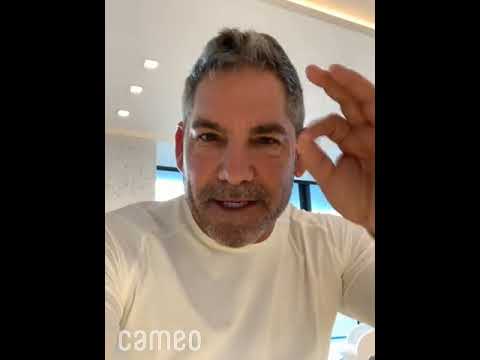
In this podcast, I’m joining Brandon Breshears (Host of Veterinary Marketing Podcast) to share ideas on how veterinary practices can scale using Dollar a Day and SEO.
Many view the Dollar a Day strategy I’m known for as some mystical secret, but it’s simply a test.
To advertise on most networks, the minimum budget typically starts at a dollar per day, like TikTok at $5 or $10, depending on your objective. Facebook follows a similar structure with options at $1, $5, or $10.
Consider this: when you run an ad, there are numerous factors influencing its success—targeting, messaging, timing, offer, landing page, and even the people featured in it if it’s a video.
It’s like a combination lock; finding what works is akin to discovering the right key. For instance, if you’re an established 24-hour emergency vet with a stellar reputation, featuring yourself in an ad discussing your dedication to animal care could attract more customers.
The essence of the Dollar a Day approach is maximizing what’s already effective in your veterinary business.
If a particular Google keyword yields results, consider creating a video ad or refining the landing page.
When a piece of content gains traction, the focus shifts to amplifying its impact—whether by expanding to different platforms, setting up remarketing campaigns, or leveraging lookalike audiences.
Most people create content without realizing the multitude of variables at play. It’s akin to throwing ten items out there and hoping one sticks, as we experienced with the Golden State Warriors.
Particularly in the vast social media space, catching attention within the first few seconds is paramount. If you can’t hook them early, they’ll scroll past, regardless of your offer or subsequent message.
That’s where rapid testing comes in handy. Investing just a Dollar a Day, or $7 a week, per piece of content allows for swift evaluation of its potential success. This approach saves significant time and money compared to waiting for 250 conversions to gauge statistical significance.
By quickly identifying engaging content—those that pass the hook stage—we can optimize for leads and conversions further down the funnel.
However, the deeper you go into the funnel, the higher the costs—be it raw inventory, cost per click, or other metrics.
Thus, we’re not chasing cheap metrics like fans or impressions; we seek resonance with our target audience. Just like Google’s quality score, which emphasizes click-through rate (CTR), platforms like Facebook also prioritize relevance and engagement.
For instance, I made a video featuring Grant Cardone and targeted his audience, achieving a 45% engagement rate, which was fantastic. The high engagement was because the content was relevant to Grant’s audience.

Then, I showcased my friend Andy, a chef at an Italian restaurant near Chicago, in simple videos discussing his delicious dishes and specials. Despite not being a professional influencer, these videos garnered significant engagement, especially when I posted a casual interview with Andy on Twitter, targeting the local neighborhood. It’s intriguing why these posts resonated so well—is it my advertising skills, video expertise, or mouthwatering food?
Regardless, the engagement rate speaks volumes about the content’s relevance.
So, whether you’re a veterinarian in a small town like Rexburg, Idaho, or any other niche business, tapping into local interests and personalities can yield similar results. Whether it’s sharing favorite local spots, interviewing well-known locals, or discussing community events, relevance is key to capturing audience attention and driving engagement.
Think about it: rather than aiming to reach the entire planet, you can pinpoint your target audience to a micro-neighborhood. This localized approach drives referrals and leads and fosters a sense of community engagement.
It’s truly astonishing how many local veterinary businesses fail to capitalize on their community connections. Whether it’s a veterinary clinic, a garage door repair service, or any other local endeavor, the potential for leveraging those neighborhood ties is immense—and that’s where the Dollar a Day strategy shines.
Take, for example, my friend Valina, a massage therapist who exudes shyness. Despite her reservations, I encouraged her to share her expertise and journey in short, authentic videos. The same goes for individuals like Larnique, who manages a renowned funeral home in Las Vegas, or her son Skylar, who, despite his introverted nature, shared captivating insights into their family business.
These stories, often captured on nothing more than a smartphone, resonate deeply with their intended audience. And the beauty of it all? Despite lacking a large social media following, we’re able to amplify these narratives with just a Dollar a Day in targeted promotion.
You see, it’s not about flashy production or polished personas; it’s about authenticity and relevance.
Now, with the help of AI tools, we’re able to transform these raw videos into polished content that fits various platforms—from YouTube videos to Google My Business posts. And with a bit of creative storytelling and targeted promotion, we’re able to amplify their impact and reach across multiple channels, all for just a Dollar a Day investment.
The Truth About Folks Who Offer SEO Services to Veterinary Practices
Most folks who claim to be SEO experts are not.
Back when I worked for a search engine, my job was to keep the search results honest. Here’s the deal: getting to the top of Google sounds great, but it’s not easy. Search engines are smart—they can spot tricks like buying links or stuffing keywords where they don’t belong. We catch about 99% of these sneaky moves.
I’m not saying all SEO folks are trying to pull a fast one. Some might not even know they’re doing it wrong. They might hire other people to do the work, who then hire more people, and it all gets messy. But when we look into where these tactics come from, we often find many low-quality stuff scattered around the internet, far from where it should be.
Here’s the thing about SEO: it’s all about getting good links. And let me tell you, 80% of SEO success depends on having good, relevant links. So when someone on the other side of the world tries to write about local pet care without knowing anything about the area, it’s not going to work.
To succeed in local veterinary markets, you need to be part of the community and know what you’re talking about.
Sure, there are still some sneaky tricks that might give you a short-term boost. But trust me, after doing this for over 20 years, I’ve seen businesses get in big trouble for trying to cheat the system. Ultimately, the best way to succeed in SEO is to be honest, create good content about your veterinary services, and play by the rules.
Real SEO in Veterinary Practice Goes Beyond Web Development
So, there’s a big difference between SEO (search engine optimization) and web development. In vet medicine, for example, many web developers claim to offer SEO services, but they’re mainly just setting up basic stuff like ensuring your website is structured well and loads fast. That’s what we call onsite SEO, and it’s important, but it’s not the whole picture.
Real SEO also involves building links from other websites to yours—that’s what actually helps you rank higher in search results. But nowadays, some folks call the technical stuff onsite SEO, which can be confusing. If your website is built properly on a platform like WordPress and has things like clickable phone numbers and fast loading times, that’s just good website building, not necessarily SEO.
And here’s the kicker: some SEO companies take credit for things they didn’t really do. They might show you reports saying they drove a ton of leads to your veterinary business, but often, those leads came from people already searching for your business by name because you have a good reputation—not because of anything the SEO company did.
So, if you strip out those branded searches and look at how many new clients actually came from searches like “veterinary in [city name],” you might find it’s not as impressive as they claim. And here’s the thing: many of these agencies don’t give you access to your own accounts, like Google Analytics or your website, because they don’t want you to see what’s really going on.
But you should demand access to those accounts because it’s the only way to really know what’s happening with your marketing. And when it comes to paid advertising, like Google Ads, it’s easy to see if anything has been done because you can check the change history. Often, you’ll find that nothing has been touched for months or even years after the initial setup.
So, don’t be fooled by flashy reports or smooth-talking salespeople. Ensure you have access to your accounts and demand transparency from any agency you work with. After all, it’s your veterinary business on the line.
Key Takeaways
- By investing just a Dollar a Day, veterinary practices can quickly test different pieces of content to see what captures people’s attention.
- Social media users have short attention spans, so grabbing people’s interest is crucial within the first few seconds of your content.
- Instead of trying to reach a global audience, veterinary experts should focus on connecting with their local community.
- Authenticity is key. Your audience is more likely to engage with genuine content, even if it’s not polished or flashy.
- SEO success depends on building relevant links rather than using tricky tactics that can backfire.
- When working with marketing agencies, veterinary practices should make sure to demand transparency. You should have access to your accounts and be able to see exactly what’s being done on your behalf.
Looking to unlock your SEO potential? Visit AreYougoogleable.com now for a comprehensive SEO audit. It’s quick, effective, and essential—let’s go!
Dennis Yu is a former search engine engineer who has spent a billion dollars on Google and Facebook ads for Nike, Quiznos, Ashley Furniture, Red Bull, State Farm, and other organizations that have many locations.
He has achieved 25% of his goal of creating a million digital marketing jobs because of his partnership with universities, professional organizations, and agencies. Companies like GoDaddy, Fiverr, onlinejobs.ph, 7 Figure Agency, and Vendasta partner with him to create training and certifications.
Dennis created the Dollar a Day Strategy for local service businesses to enhance their existing local reputation and make the phone ring. He’s coaching young adult agency owners who serve plumbers, AC technicians, landscapers, roofers, electricians in conjunction with leaders in these industries.
Mr. Yu believes that there should be a standard in measuring local marketing efforts, much like doctors and plumbers need to be certified and licensed. His Content Factory training and dashboards are used by thousands of practitioners.
